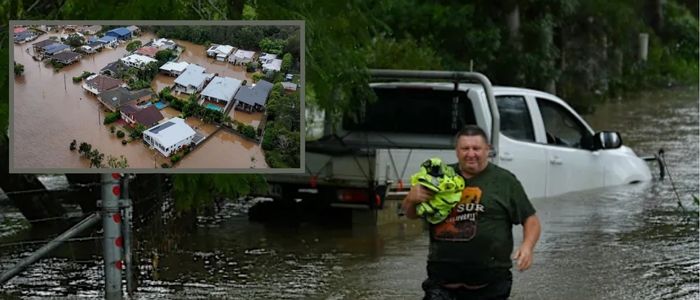The largest ice sheets on the planet, in Greenland and Antarctica, are on track for eventual meltdown, raising the prospect of a rise in sea levels that would submerge coastal cities and displace up to hundreds of millions of people. And even if global warming is limited to 1.5 degrees Celsius — a long-standing target supposed to head off the worst climate damage — the ice sheets may still be in trouble, leading to several feet of sea level rise and mass migration away from low-lying coastal regions.
A Hotter World and More Melted Ice
A group of international scientists reviewed a broad array of studies looking at satellite measurements, climate models, ice core samples, sea-page sediments, and even octopus DNA. Their results speak to an alarming future. The world is now on pace for as much as 2.9 degrees of warming by 2100. But the research cautions that even the 1.5-degree limit may not be sufficient to save the ice sheets.
Today, the Earth is about 1.2 degrees warmer than before the Industrial Revolution. According to the study, this current level may already be sufficient to cause an ice-sheet collapse and dramatic sea level increases. Together, the ice sheets on Greenland and Antarctica include enough water locked up as ice to raise sea levels worldwide an estimated 213 feet — an apocalyptic thought experiment, perhaps, but one that underscores what's at stake. Losses of ice from these regions have sped up fourfold, from 81 billion tons from 1992 to 1999, to 475 billion tons from 2010 to 2019, for a total of 6.1 trillion tons of ice. This melting is now the biggest single driver of sea level rise, and it is happening far earlier than a lot of experts thought it would.
The New World That Climate Change Made Up Next Why Making New Drugs Is So Hard Previous Why American Life Went On as Normal During the 1918 Flu Time and again, organized human infrastructure has proven unable to withstand the havoc that nature can unleash with little warning or sympathy.
The analysis cautions that 1.5 degrees Celsius of warming would probably be "far too high" to halt irreversible ice sheet retreat. No, instead, scientists say the world should brace for several feet of sea level rise over the next century or two. By the end of this century, sea levels may start rising by about 0.4 inches a year, according to Chris Stokes, a glaciologist and one of the study's authors. That's a rate that over a century would amount to about 40 inches — perhaps more with sea-level rises — of sea-level rise, a pace that would drive widespread migration and destruction of low-lying coastal areas.
The implications are massive. Some 230 million people now live within one meter (3.2 feet) of the sea. Even modest losses of ice could dramatically change coastlines, forcing populations to flee, and pressuring existing adaptation strategies to their limits. A second co-author, and the head of the European satellite agency, Jonathan Bamber, said, "What we think is the most likely scenario is that the world will, because of sea level rising, also see land migration on a scale that we have never seen before in modern history."Of particular concern is the West Antarctic Ice Sheet, which shows indications that it may already be in an irreversible decline, perpetuating sea level rise.
While no one is sure about the exact tipping points for collapse, scientists are becoming more and more alarmed. Previous models had warned that the ice sheets were unlikely to become destabilized before the planet warmed by 3 degrees, but newer research has pegged the threshold closer to 1.5 degrees — or even lower.
Any ice sheet collapse or slowing could be halted or amplified, but that would probably require holding global temperatures at levels closer to a single degree above the pre-industrial era. That would take deep and immediate cuts in fossil fuel use — something not in store given continuing investment in oil, coal, and gas around the world
The Path Ahead
Chris Stokes added: "There is very little here to give hope based on present observations. "I don't see a lot that we're watching, but that gives us a lot of hope here," he said. Now, the most optimistic case, he said, might well be a slow, constant creep of sea-level rise, rather than one that is abrupt and full of chaotic swings.
Still, the scientists warn, it's essential not to abandon climate goals. Even losing a fraction of a degree is crucial. Limiting global warming to 1.5 degrees is still a goal worth pursuing, although it won't completely prevent the loss of ice sheets. "It absolutely should be our goal," Stokes said, "but by no means will it slow down or halt sea level rise and melting ice sheets."
Stay informed with Newsbuck – your go-to destination for the latest global news, trends, and updates across politics, entertainment, health, tech, and more. Explore smarter stories every day at Newsbuck.









